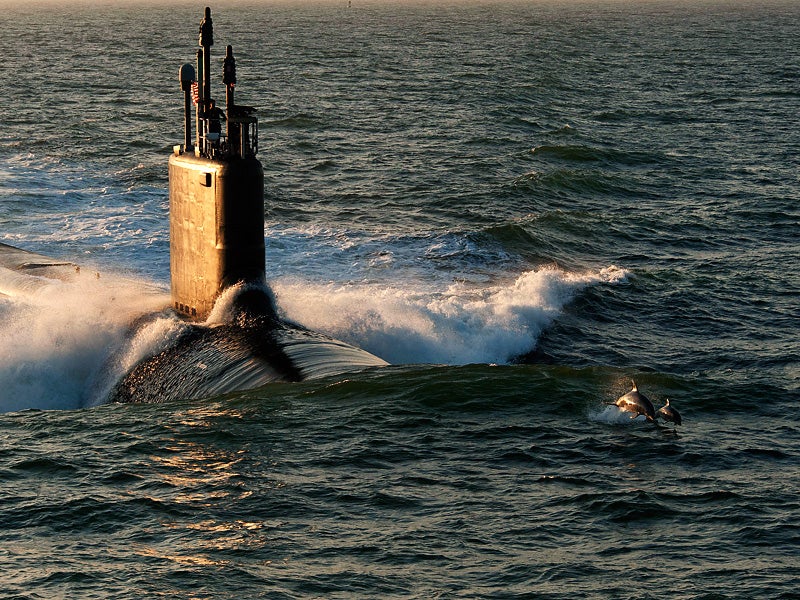Whales Blow Hole in Sonar Plan
A judge tells the Navy that it doesn’t need access to every square inch of the ocean to conduct training exercises. There is a better way to protect both our country and our wildlife.

This page was published 10 years ago. Find the latest on Earthjustice’s work.
Whales, dolphins, sea turtles and many other marine mammals, not to mention everyone here at Earthjustice, are celebrating a court ruling that promises relief from harmful Navy weapons and sonar testing in the Pacific Ocean.
On March 31, a federal judge ruled that the National Marine Fisheries Service broke the law when it approved the U.S. Navy’s five-year Pacific weapons testing and training plan. The agency had concluded that the Navy’s use of sonar, explosives and vessel strikes would threaten thousands of ocean dwellers with permanent hearing loss, lung damage and death—but approved it anyway.
Ever wonder what sonar sounds like out on the water? To humans, it’s unpleasantly reminiscent of nails on a chalkboard, but it can spell disaster for marine mammals that depend on hearing for survival. A single “ping” of the Navy’s most powerful sonar is capable of permanently deafening some whales. According to the government’s own estimates, the Navy’s plan would cause an estimated 9.6 million instances of harm to marine mammals over the plan’s five-year duration.
Earthjustice filed this lawsuit in 2013 in the U.S. District Court of Hawai‘i, representing Conservation Council for Hawai‘i, the Animal Welfare Institute, the Center for Biological Diversity and the Ocean Mammal Institute, alleging violations of the National Environmental Policy Act, Marine Mammal Protection Act and Endangered Species Act.
The National Environmental Policy Act requires that federal agencies consider a range of alternatives to their proposed plans, including alternatives that can reduce the threat of environmental harm. We sued because the Fisheries Service and the Navy failed to evaluate alternatives that would protect biologically sensitive areas from training and testing.
Having failed to require such protections, the Fisheries Service authorized harm to what the court described as a “stunning number of marine mammals,” violating its legal duties under the Endangered Species Act. This law exists to ensure that activities like Navy training would not push endangered whales to extinction. The Fisheries Service also violated the Marine Mammal Protection Act, which serves to prevent harm to marine mammal populations.
The Fisheries Service has already identified vital areas to protect for whales, dolphins and other marine mammals around the Hawaiian Islands and off the coast of Southern California. In 2004, Navy sonar training near Hawai‘i was implicated in a mass stranding of up to 200 melon-headed whales in Kaua‘i’s Hanalei Bay. Given events like this, it is shocking that the agency gave the Navy free rein to train throughout the Pacific without protecting biologically sensitive areas. The court’s ruling serves as an important reminder that the federal government has a responsibility to protect both our national security and our natural heritage.
The court’s decision recognizes that the Navy doesn’t need every inch of the Pacific for training. There is plenty of ocean for the Navy to carry out its mission and also to avoid severe harm to marine mammals by staying out of a small number of biologically sensitive areas.
Click here to listen to David Henkin speak about this case on Hawai‘i Public Radio.
Established in 1988, Earthjustice's Mid-Pacific Office, located in Honolulu, Hawaiʻi, works on a broad range of environmental and community health issues, including to ensure water is a public trust and to achieve a cleaner energy future.